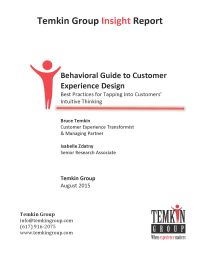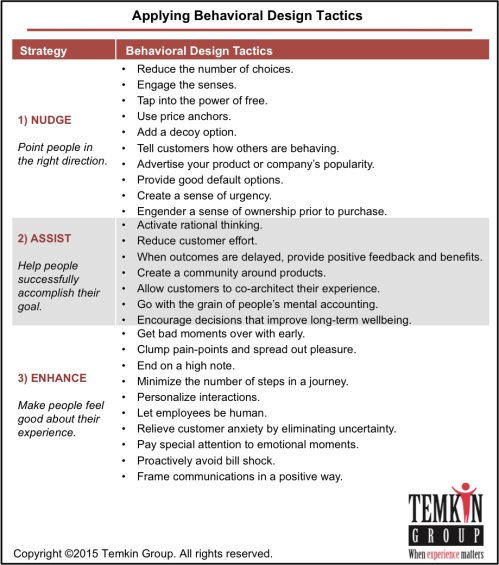Report: Behavioral Guide to Customer Experience Design
August 3, 2015 Leave a comment
 We just published a Temkin Group report, Behavioral Guide to Customer Experience Design. Here’s the executive summary:
We just published a Temkin Group report, Behavioral Guide to Customer Experience Design. Here’s the executive summary:
According to recent scientific research, customers make most of their decisions using intuitive thinking instead of rational thinking. Intuitive thinking relies on unconscious heuristics and biases to make decisions efficiently, and as a result, people tend to be more affected by losses than by gains, to prefer simplicity over complexity, to be affected by their current emotional and visceral states, to be heavily influenced by those around them, to make decisions based on context, and to misjudge their past and future experiences. In this report, we identify best practices for tapping into these heuristics and biases across three areas of experience design; companies can Nudge customers in the right direction, Assist them in accomplishing their goals, and Enhance their overall experience. To incorporate intuitive thinking into experience design, companies need to follow four steps: define target customers, identify relevant heuristics and biases, select design strategies, and then test, test, test.
Here are tactics for applying these human biases in your experience design efforts that we describe in the report:
The bottom line: Embrace your customers’ natural behaviors.
